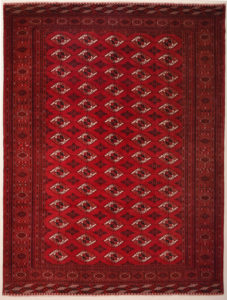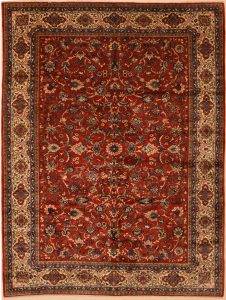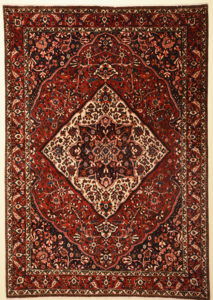10-Point Inspection
The rugs in our collection are some of the highest quality rugs you’ll ever hope to find on U.S. soil.
And here’s why…
You see, these days, it takes mere seconds for Jeff (our co-founder) to spot a genuine Persian or Oriental rug.
It’s kind of like an instinct or second nature.
A feeling he gets when he first sets eyes on any rug he hasn’t seen before.
To know if a rug is what it appears to be.
⇒ ⇒ Genuine, authentic and of the highest quality.
But he doesn’t just rely on “gut feel” or intuition.
Over the last 24 years he has refined & improved a fail-safe system to guarantee every rug that reaches our showroom – ready for sale – passes his…
10 Point Inspection Process
So, what is entailed in this process?

1. Pattern: we inspect the pattern looking for symmetry and alignment. We check that the pattern is harmonious with the size of the rug.
2. Materials: we inspect the materials of the rug. This includes the wool or silk & Wool pile. And the cotton or wool foundation. We make sure of its quality and that the rug has been kept in the ideal environment.
3. Symmetry & Straightness: as much as possible for a hand-knotted, hand-made rug, is it straight and symmetrical.
4. Weave & Design for Authenticiy: look closer at the weave and design to see if it matches the correct lineage of this rug type – to ensure authenticity. For example if a Tabriz rug is truly a Tabriz. Or if an Alabaf signature rug is truly from the Alabaf Workshop.
5. Knot-Count: In this step we take a ruler and count the knot density our selves so we know the true knot density. This knot count value is what you see on our product pages. Usually the higher the knots per square inch (KPSI) the more valuable it is.
6. Color Harmony: make sure there are no overpowering or unbalanced colors in one area of the rug vs another.
7. Abrash Inspection: ensure that there is consistent strength and variation of color through out the rug. While also keeping in mind that old and antique rugs will have areas where the colors fades more then other parts of the rug, due to the fat of the wool.
8. General Quality Control: check for color fade, color-run, worn areas, damaged selvages & fringes or any other physical damage or imperfections
9. Repair: Newer rug or rugs just a few decades old shouldn’t have any repairs. But it’s normal for a much older rug to have some repair. If it does have repairs, how does the repair look? If the rug has any major repairs the rug is rejected
10. Durability: Check the thickness of the pile and the tightness of the weave. To make sure that the rug can be professionally washed and be used a practical setting such as high traffic areas.
Each rug is put through this rigorous & meticulous 10 Point Inspection Process.
The inspection takes a good amount of time, but is worth every minute of investment…
Because it…
Guarantees you get a world class rug when you shop with us!




